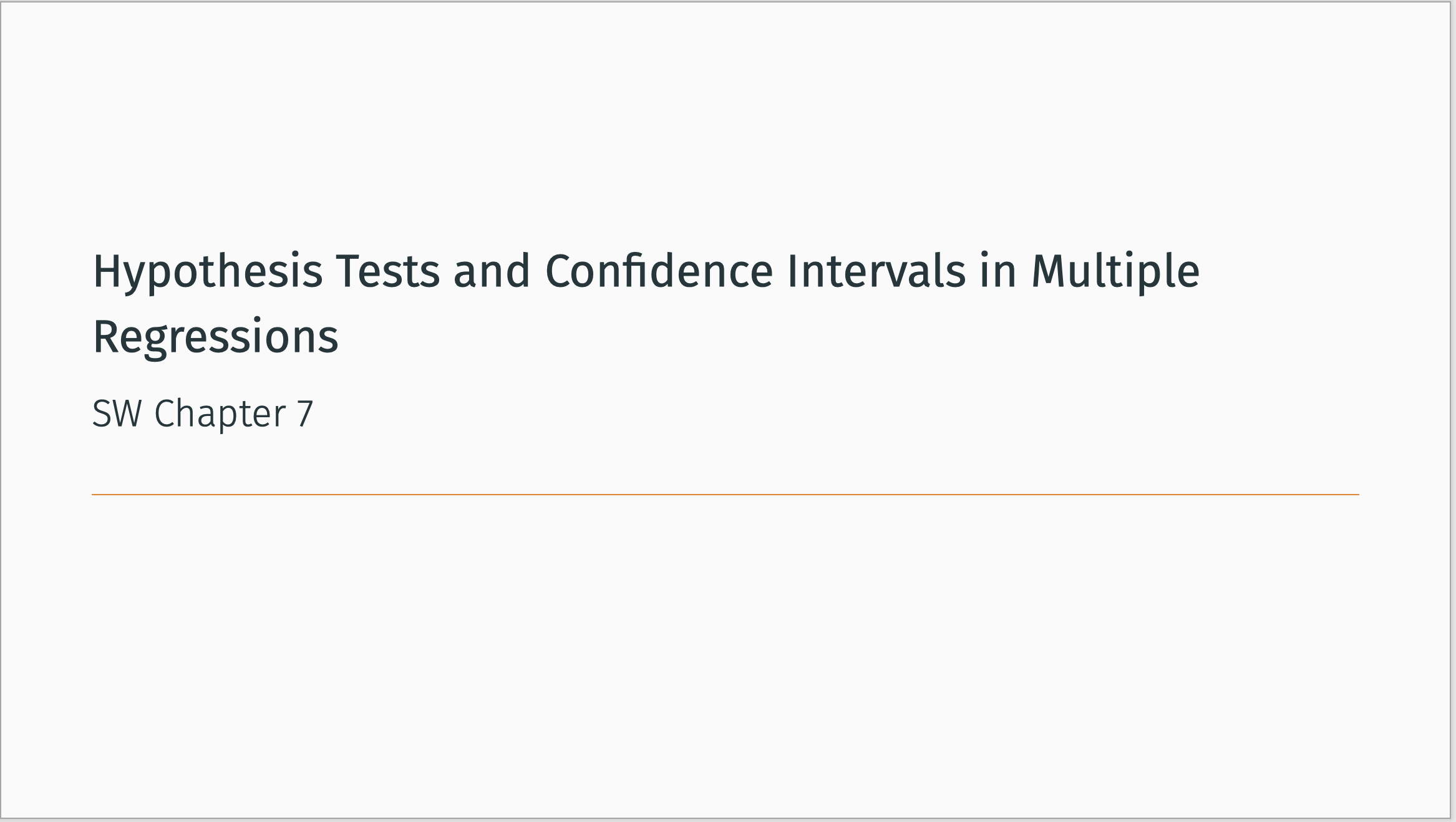Week 7 - Hypothesis Tests with Multiple Regressions
Content for week of Monday, October 11, 2021–Friday, October 15, 2021
Overview
And now, we’re back to hypothesis testing. The big thing we’re going to learn about is testing more complicated hypotheses, like whether two coefficients are equal, and whether a whole bunch of coefficients equal zero.
Reading Guide
SW 7.1 Hypothesis Tests and Confidence Intervals for a Single Coefficient
Here, we want to test hypothesis of this form:
If you want another take on hypothesis testing with regression coefficients, go ahead and read this. I’m not going to cover this in class, because we’ve hit this in Chapter 5.
SW 7.2 Tests of Joint Hypotheses
Here, we test hypothesis with lots of coefficients, of this form:
